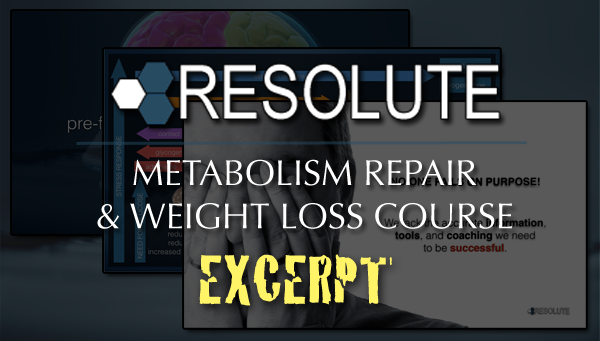We build rituals around everything we do. When we want to create change in our lives we need to consciously craft those rituals so the result we want is simply the default reaction, not something we have to expend creative energy to reach.
In Essentialism, Greg McKeown narrates the race ritual of Micheal Phelps, the most decorated American Olympian of all time winning 22 Olympic medals. At the 2008 Olympics in Beijing China we set a record for most first place finishes by any athlete in a single Olympics, eight gold medals.
Two hours before a race Michael Phelps would conduct the exact same warmup swim every time, in the exact same order.
After the swim he dry off, put on his headphones and sit on the massage table. Always sitting, never lying down.
From this point forward he would not speak to his coach or anyone else until after the race was over.
At 45 minutes before the race, he would get dressed for the race. At 30 minutes he would go to the warmup pool for a 600 meter swim.
At 10 minutes before the race we would walk to the ready room and find a place where he could sit alone. He would place his goggles on one side and his towel on the other.
When his race was called, he would walk to the blocks. He always approached the blocks from the left side. He would dry the block every time, and perform the same two stretches, in the exact same order, always with the left leg first. Then he would remove the right earbud.
When his name was called he would remove the left earbud.
Phelps also had a routine for what to think about every night before going to sleep, and first thing in the morning when he awoke.
He called it “watching the video tape,” and was a visualization of the perfect race in slow motion. Every detail from getting on the blocks, to every stroke, until he won the race.
During practice, when his coach wanted to challenge him he would simply say, “push the video tape.”
So, by the time Phelps started a race he was more than halfway through a routine in which he had been successful every step of the way. The race itself was simply the final step of a flawless performance.
The way we eat, move, sleep, breath, and react to stress are the most practiced rituals we engage in. Very often when we decide we want to make a change in our lives we think we will simply make a declaration and we will “rise to the occasion.”
However, most of the time we do not rise to the occasion. Instead, we fall to the level of our practice.
To successfully implement long term change we need to create new practices. Practices that result in the new habit being the “default result” and over time making the change effortless.
Let’s say I want to eat a healthy lunch. If I pack my lunch in advance and take it with me then my default will probably be to eat my healthy lunch. But if I am relying on finding a healthy lunch at a restaurant then I have to find the right restaurant, hope they are not too busy, and hope I stick to the menu choices I know is best. Of course, this can still be successful but it takes a lot more effort.
The more we practice a routine the more we fire the brain’s neurons and synapsis’ that make that routine possible. Remember, neurons that fire together, wire together. So, the more that a pattern or routine is practiced the easier it gets.
Think about what it was like when you first learned to drive a car. Not only were you still getting used to controlling the machine, but you had to do it in a dynamic environment in which the cars around you were constantly in motion.
After years of driving a car, I’m sure you have experienced a time when you drove home and were surprised when you arrived because you had given so little conscious thought to drive the car.
This is because once the thought pattern is fully ingrained, the task is shifted to the brain’s basal ganglia and allows the pre-frontal cortex freedom to concentrate on new tasks.
As an example, we have all heard of multi-tasking. Some people think they are born to multi-task and believe it to be an efficient way to accomplish many tasks.
Others, would characterize multi-tasking as doing a bunch of things all at once, and doing them all poorly.
The truth is, well-practiced tasks that have already been passed to the basal ganglia can be performed simultaneously with a high level of success. In fact they can often be very successful even if performed with a single task that requires concentration and problem-solving.
Because the routine, or practiced events are being driven by the basal ganglia and the task involving concentration is being driven by the pre-frontal cortex. So essentially, you have two structures of the brain pretty much working independently.
This is important because if we are trying to do more than one task at a time that requires concentration, creativity, problem-solving or inhibition then each task is competing for the resources of the pre-frontal cortex and is much harder to perform.
So, we can see that each of the opinions about multi-tasking can be valid depending on the activities being performed.
This also means that when we want to create new habits, or rituals we need to consider how the ritual can be learned based on how engaged our pre-frontal cortex is at that time. Let me give you an example.
Lets say our goal is to work out three times in a week. We realize that throughout the workday our attention will be on a variety of tasks that will require our attention. Knowing that our pre-frontal cortex will be occupied during those times we decide to put some measures in place on Sunday afternoon when our pre-frontal cortex is available.
On Sunday afternoon we go through our schedule and mark the days and times when we will workout. Then we pack our gym bag and put it in the car. We are much more likely to make it to the gym now then if we were making those decisions during the week.
Now, if the person is training at Taiso Fitness, they could also go online and schedule their workout times on the gym calendar, further increasing their sense of obligation and improving their chances of success. Additionally, since their program is designed and coached, they do not have to plan what they will do at the gym.
Once this routine has been successful for a while the routine is passed to the basal ganglia and the pre-frontal cortex is available to successfully implement a new habit.
Remember, if we are not successful with a new habit then the load is too great and we need to cut the habit in half until we are able to successfully complete our ritual. Highly creative people build as many routine tasks into rituals as possible. This frees up their brain performance to devote to more creative activities.
This is an excerpt of the RESOLUTE online weight loss and metabolic repair course inspired by the work of Dr. Ray Peat, Dr. Broda Barnes, Dr. Brene Brown, Dr. James Prochaska, Dr. Martha Beck, Dr. Judith Beck, and Dr. Hans Selye.
Taiso Fitness and Nutrition
If you are looking for a shared personal training experience try Taiso Fitness and Nutrition. We are Tacoma’s fitness and nutrition gym for people who want to get out of pain or improve performance, who need immediate, measurable results, and want to make educated decisions to take control of their health.
Shared personal training provides the coaching of a personal trainer with the social support of a bootcamp style class.
Set up a complimentary consultation, or start a 21 Day Risk Free Trial. Stay up to date on the latest information through our website at www.taisofitness.com
Looking for an online course to help lose weight by repairing your metabolism and lowering your stress? Try RESOLUTE The Step-By-Step Program for People Who Want To Repair Their Metabolism.

